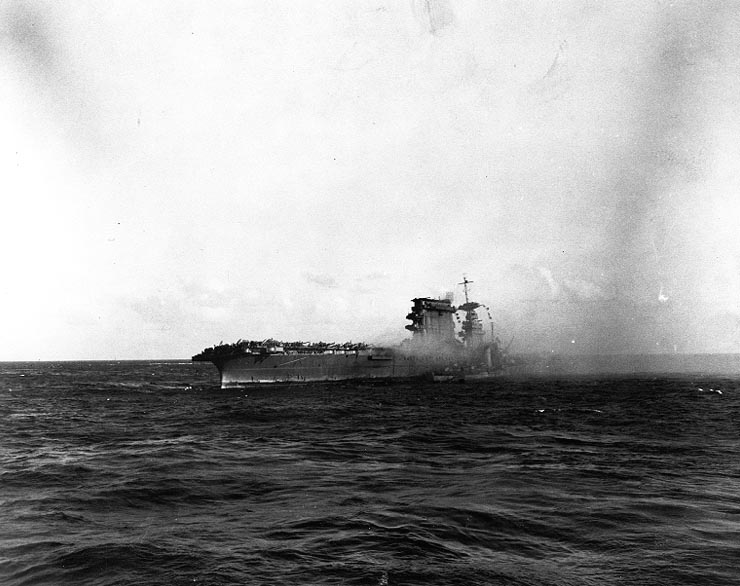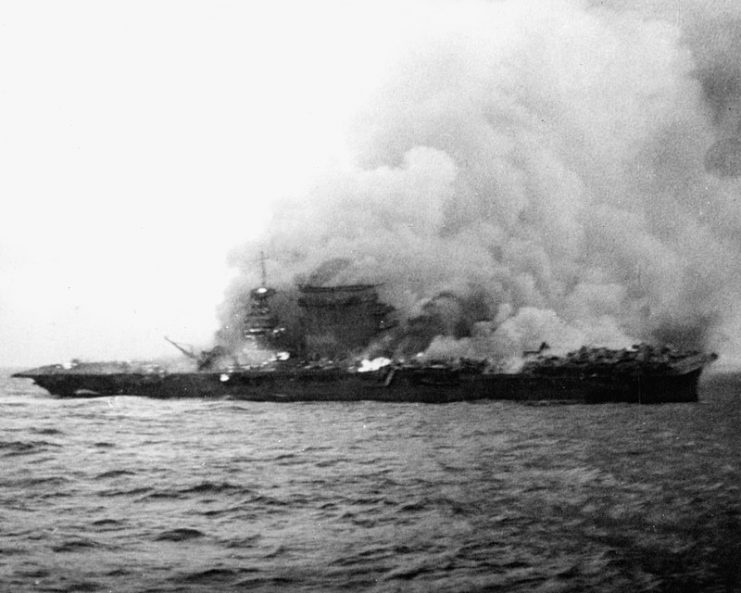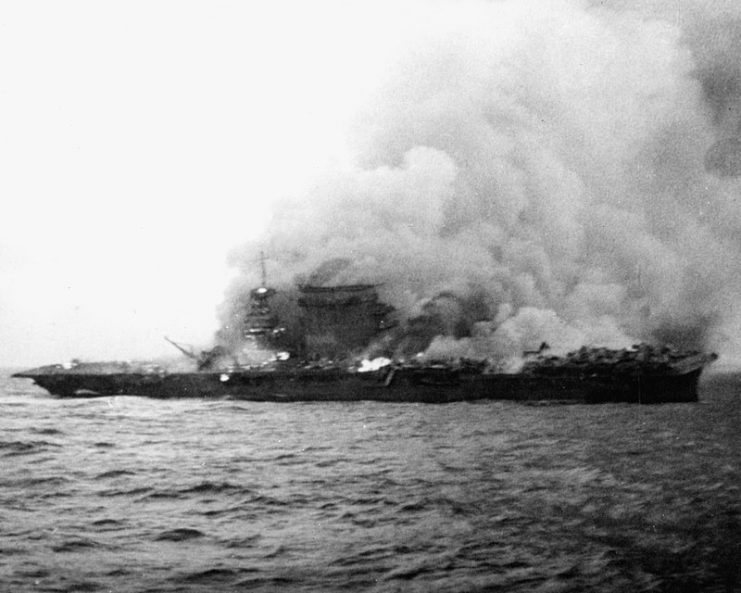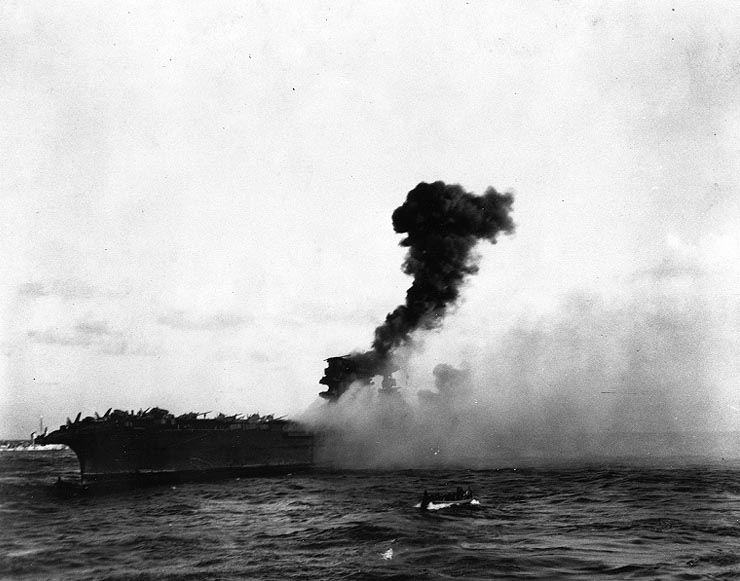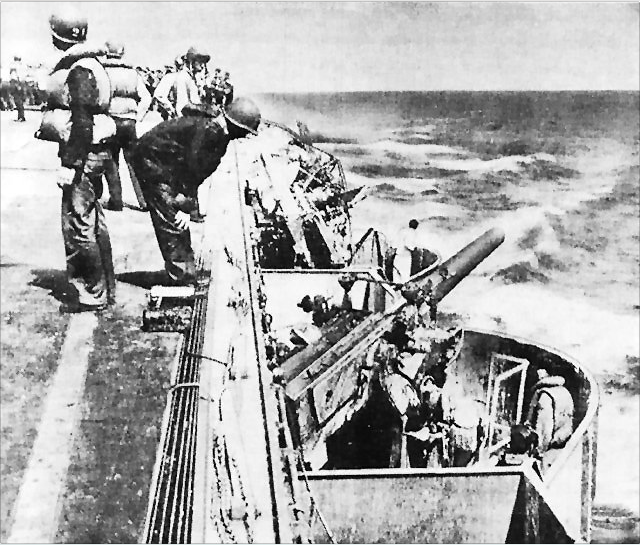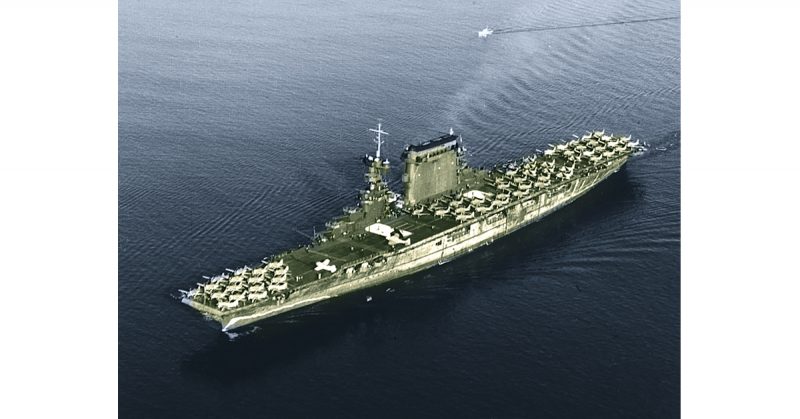The USS Lexington (CV 2), the lead ship of the Lexington class of aircraft carriers, was named after the Battle of Lexington, the first military engagement of the American Revolutionary War.
She was the second aircraft carrier to be added to the U.S. Navy, and after her commissioning in late 1927 she was assigned to the U.S. Pacific Fleet.
Alongside her sister ship Saratoga, she brought about the development and refinement of carrier tactics, which were instrumental in the U.S Navy’s ultimate victory in the Pacific Campaign of the Second World War.
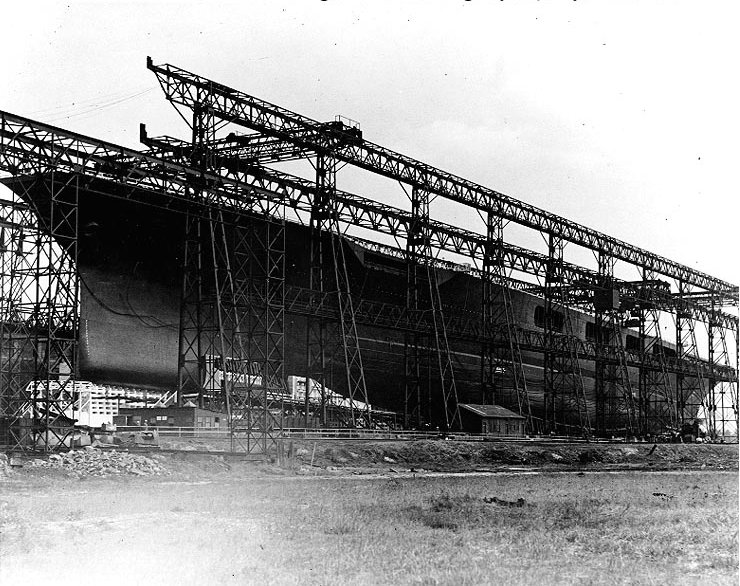
The USS Lexington was originally supposed to be a battlecruiser designated CC-1, but was eventually turned into an aircraft carrier after the signing of the Washington Treaty, which required the termination of all new battleship and battlecruiser production.
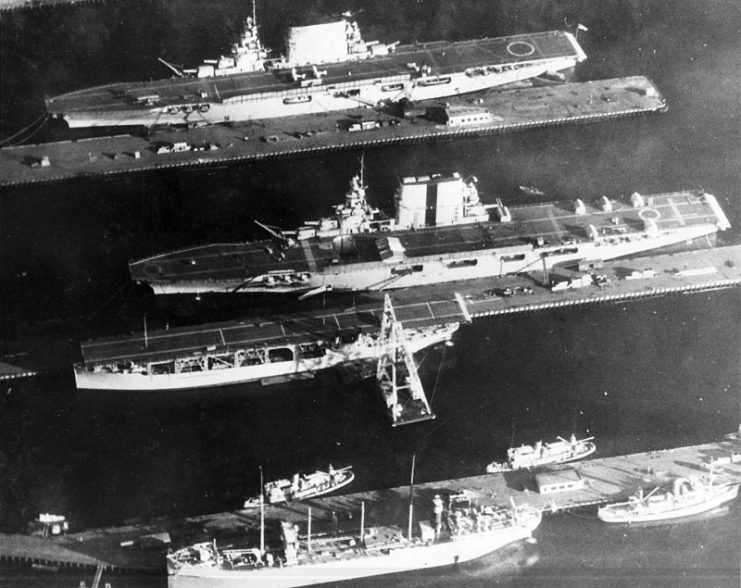
On 1 July 1922, the U.S. Navy authorized the ship to be completed as a carrier by the Fore River Ship and Engine Building Company. Her displacement was reduced to 36,000 long tons after CC-1’s main armament was removed and the height of its main armor belt was shortened.
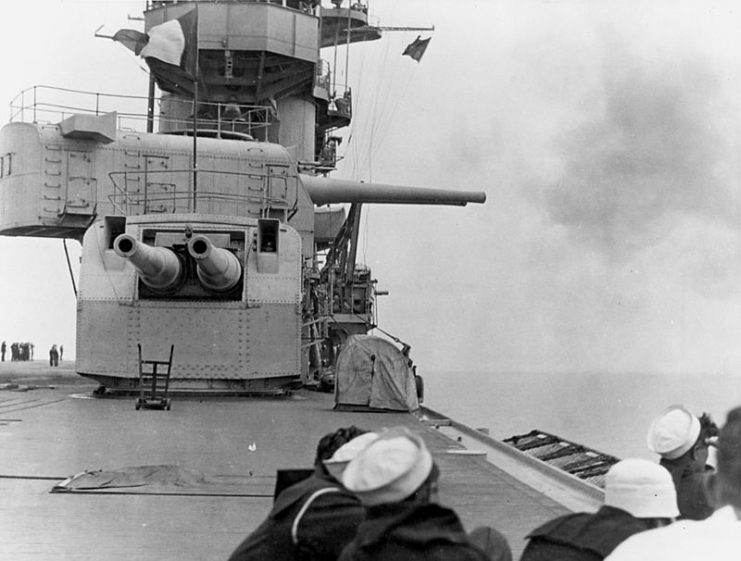
She could carry 78 aircraft and had one aircraft catapult for launching them. By 1942, her crew size was 2,791 men.
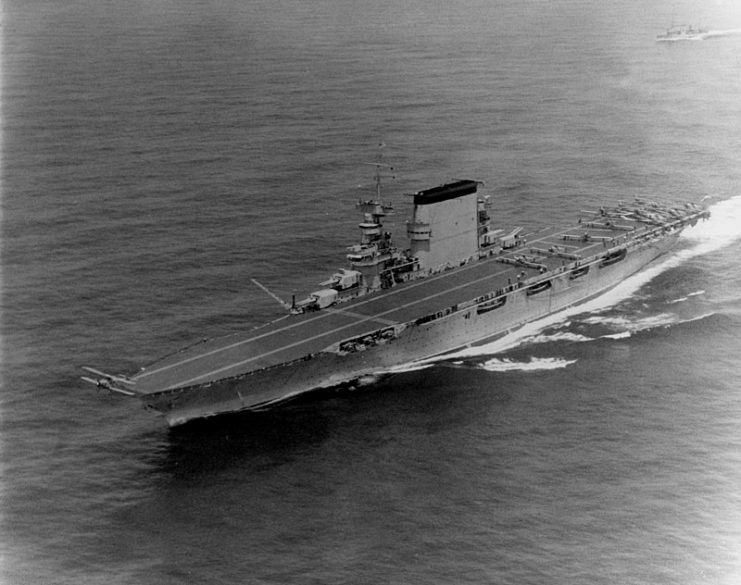
The Lexington was propelled by 4 sets of turbo-electric drive shafts and 16 water-tube boilers, and had a cruising speed of 34.59 knots. For armament, she had an anti-aircraft battery comprising twelve 25-caliber Mk 10 5″ guns and four 8″ guns.
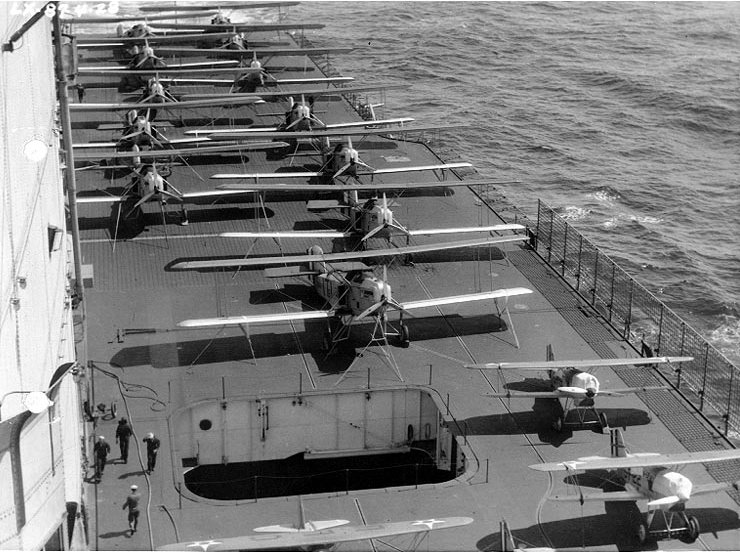
She was officially commissioned on 27 December 1927.
On 7 April 1928, Lexington joined the U.S. Navy fleet at San Pedro after its shakedown exercises, and operated from the West Coast until 1940.
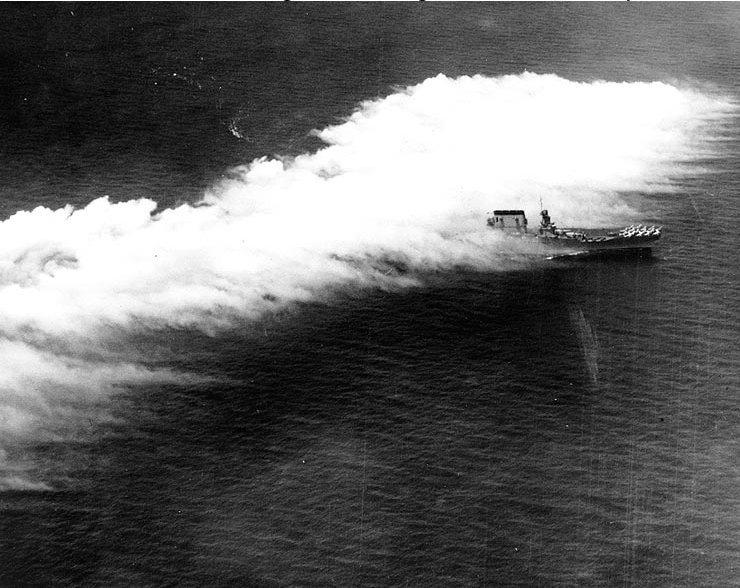
During a drought in 1929, her turbo-electric system was used to generate electricity in the city of Tacoma, Washington. In 1931, after an earthquake hit Managua, Nicaragua, Lexington provided medical personnel and relief supplies to the city.
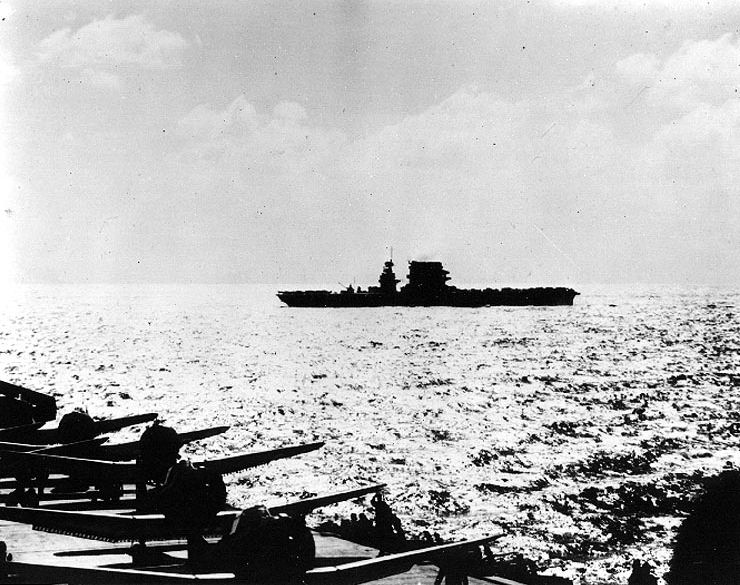
In 1941, immediately following the surprise attack at Pearl Harbor by Japanese forces, Lexington launched several search flights in an unsuccessful bid to find the Japanese fleet. This marked the beginning of real action for the Lexington.
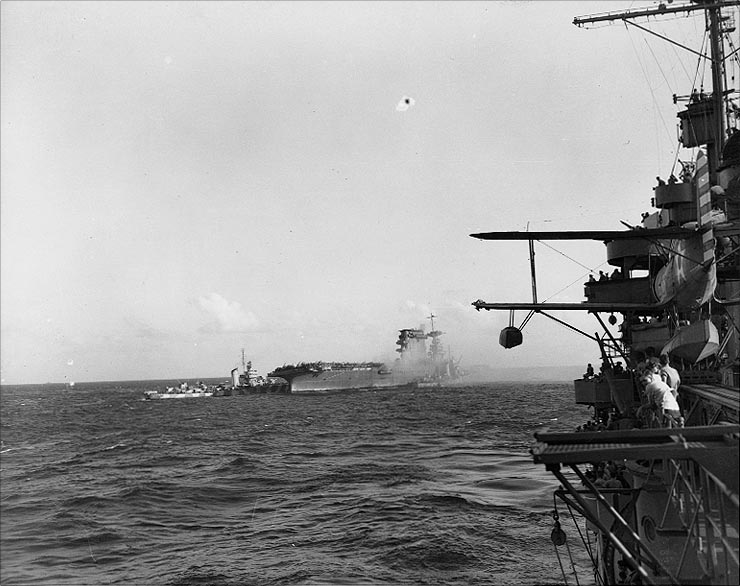
After a series of canceled expeditions, Lexington led Task Force 11, commanded by Vice Admiral Wilson Brown, in an attack against Rabaul, New Britain. She was spotted and attacked by 19 Japanese aircraft, but her anti-aircraft fire shot down 17 of the attacking planes.
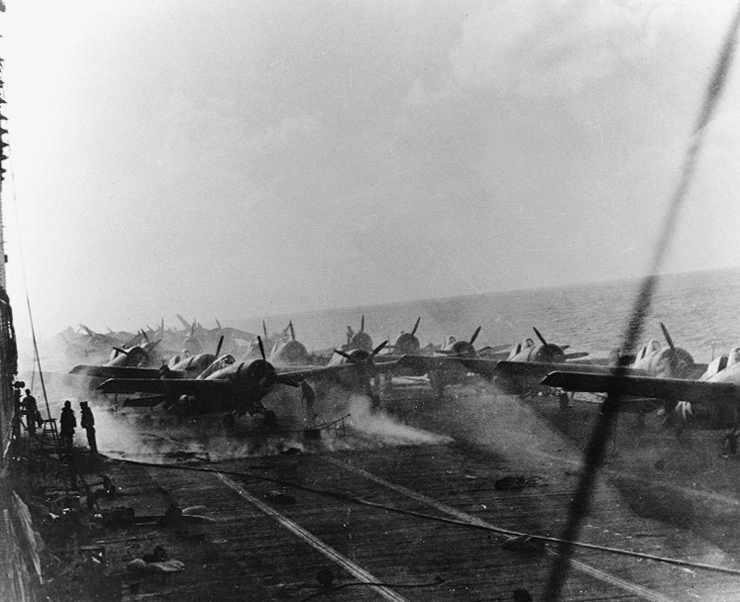
Afterward, she was assigned a number of patrols before she joined Yorktown’s Task Force 17 on a very successful raid off the east coast of New Guinea, where heavy attacks were launched on Japanese shipping and installations.
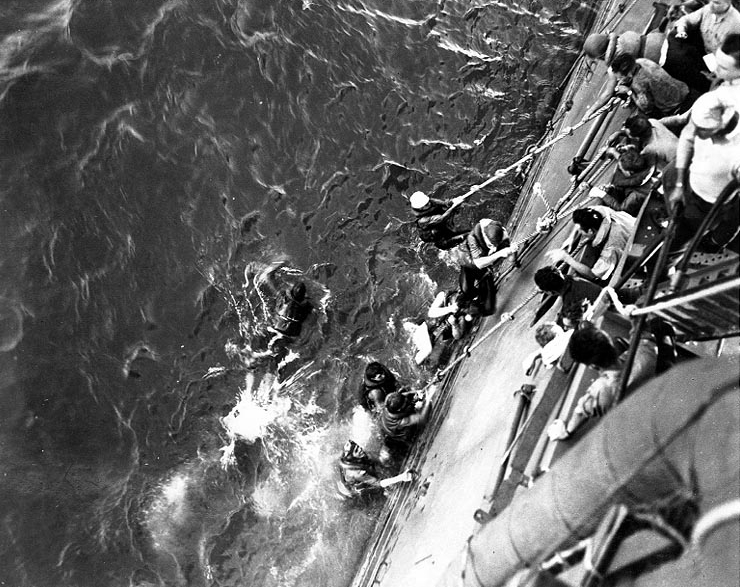
Lexington returned to Pearl Harbor for refitting, and afterward rendezvoused with Yorktown in the Coral Sea. A few days later, the Japanese launched Operation Mo, the planned invasion of Port Moresby in Papua New Guinea. Lexington and Yorktown set out to stop the invasion, and during what was later known as the Battle of the Coral Sea, they sank the Japanese light aircraft carrier Shōhō on 7 May 1942.
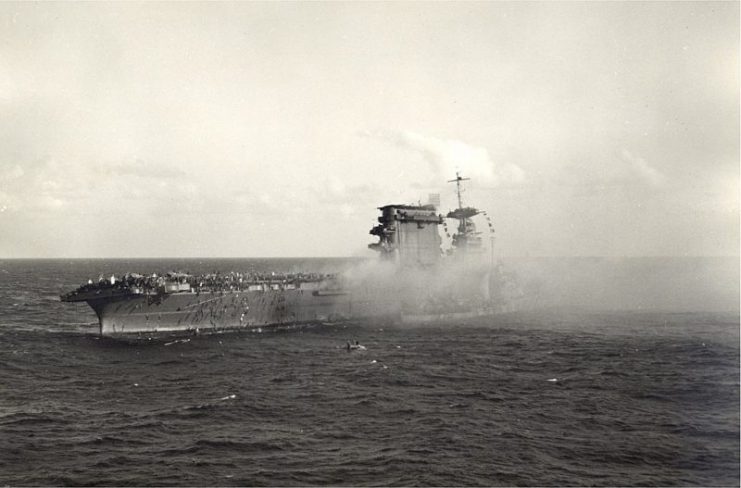
On the last day of the Battle of the Coral Sea, Lexington and Yorktown damaged the Japanese carrier Shōkaku, but in turn they were attacked by Japanese aircraft, which crippled Lexington. The combination of torpedo and bomb hits ignited a chain reaction of explosions, leaving Lexington in an unsalvageable state, so she was scuttled in the depths of the Coral Sea.
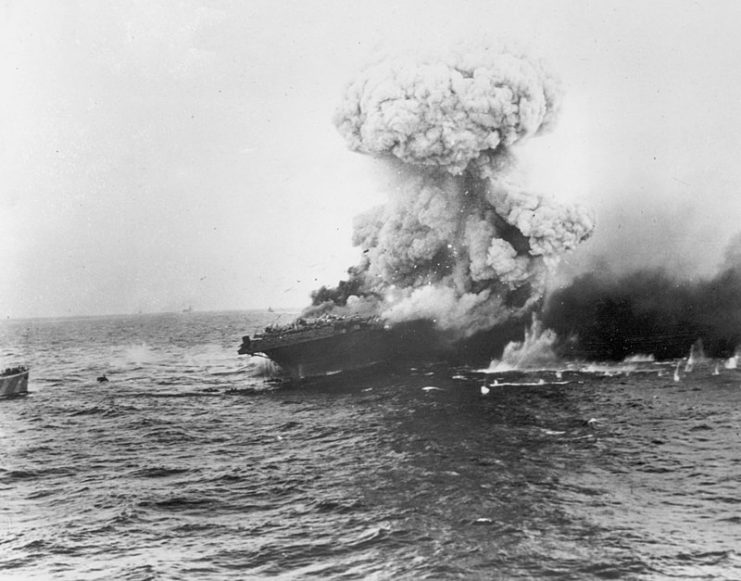
In March 2018, a team led by Paul Allen discovered the wreck of the Lexington resting on the floor of the Coral Sea, over 9,800 feet below the surface, and about 500 miles off the eastern coast of Australia.
